Watch This Space: 7 TV Shows Which Put Fashion Front And Center
In this age of peak TV, the most successful shows aren't just generating cultural buzz, they are scoring major fashion cred too. Here, clothes go beyond costumes - they play a starring role.

Any visual medium is bound to find itself eventually getting into bed with fashion, but television, with its episodic format allowing viewers to form deep attachments to their favourite shows and characters, has proven to be a particularly fruitful partner. Sparks can fly when the right show and the right clothes come together.

Sarah Jessica Parker in And Just Like That... Photo: TPG Images
Sarah Jessica Parker
Related article: See All Of The Photos From The ‘And Just Like That…’ Set
The first time in the modern history of TV and fashion we’ve seen this happen was way back in 1997, when HBO debuted a little show called Sex and the City. It wasn’t just its substance that captivated millions of fans—it was also the style. Not only did the show turn its lead, Sarah Jessica Parker, into a fashion star, it also conferred that status onto the pieces that Parker sported on-screen—most notably, the Fendi Baguette (see also: Manolos, the tutu, the newspaper dress, and belts on bare waists). That cultural imprint has remained so entrenched in our collective consciousness that when the Italian brand decided to celebrate the 25th anniversary of the Baguette bag recently, it chose to do so in New York City— with Parker sitting front-row, of course.
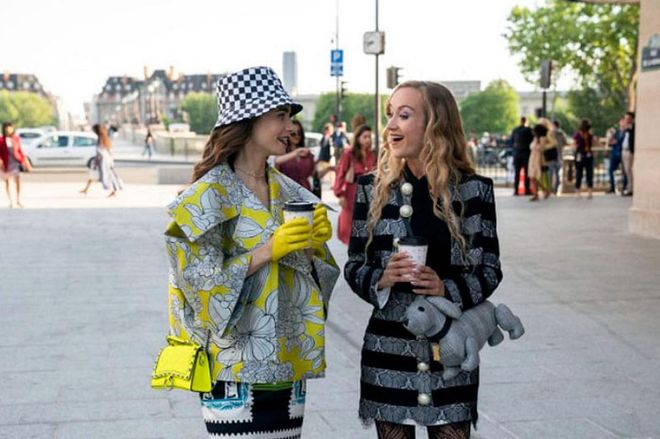
Lily Collins (left) in Emily in Paris. Photo: TPG Images
Emily In Paris
The new Sex and the City continuation, And Just Like That..., has fashion fans in a similar tizzy as the original. Paparazzi shots of the production are intensely pored over and catalogued on social media to dissect the stars’ looks. But perhaps more importantly, the franchise has birthed a spiritual heir. Boasting the same show creator (Darren Star) and costume consultant (Patricia Field), Emily in Paris has taken the same outrageous approach to fashion—madcap, high-low, and unabashedly costume-y—and served it up for the Millennial and Gen-Z set. Whether you love it or love to hate it (the latter camp is particularly vocal), it is undeniably hard to look away—and that is largely thanks to the fashion. The show’s critics like to claim that it is not realistic for a junior staffer in a PR firm to be decked out in so much designer gear; the creators have argued that they do not care about reality. The show’s massive Netflix viewing numbers along with the proliferation of listicles breaking down the outfits of Emily & co. (and those pieces consistently selling out) are testament to their approach.

Barbie Ferreira in Euphoria. Photo: TPG Images
Euphoria

Alexa Demie, Barbie Ferreira, Sophia Rose Wilson and Sydney Sweeney in Euphoria. Photo: TPG Images
Euphoria
When it comes to cultural and fashion heat, no other show is as high on the barometer as Euphoria. Its deliciously juicy drama and dark takes on teen culture are provocative enough, but it is the aesthetics that push it to the next level - heavy issues wrapped in a soft, hazy mood; its fashion a
blend of grime and glamour, camp and seediness and fantasy. The styling is individualistic and expressive—the character’s personalities writ large in their clothing: Hunter Schafer’s sensitive trans girl is equal parts grunge and pixie, Barbie Ferreira’s budding dominatrix cam-girl owns her sensuality and her curves. Pieces from major designers share screen time with those from younger labels, indie brands and thrift stores. Though miles apart in tone from Emily in Paris, like that show, the looks here are not meant to be realistic. Stills from Euphoria look more like editorial images than your average high-school snapshot. The reboot of Gossip Girl employs a similar formula—though preppier and more polished—to put a new spin on the look of a posh Upper East Side private school and its catty one-percenter inhabitants.
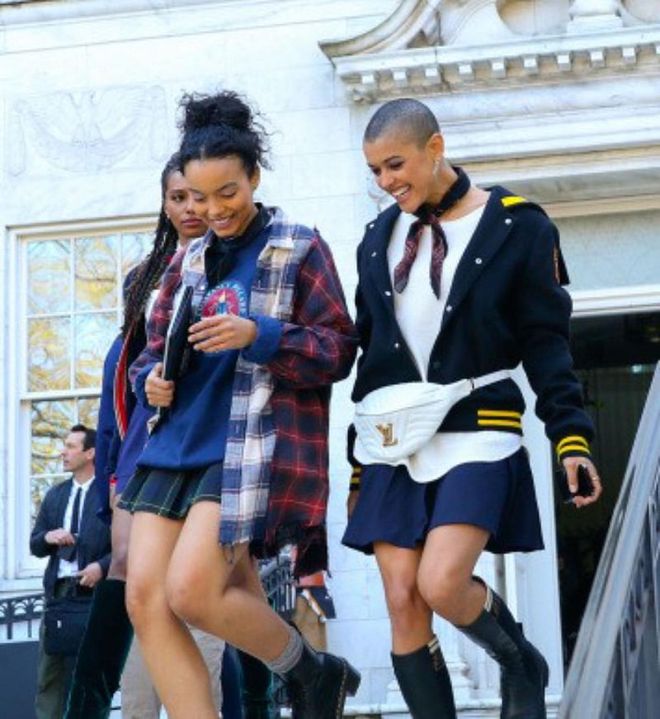
Whitney Peak and Jordan Anderson in Gossip Girl. Photo: TPG Images
Gossip Girl reboot
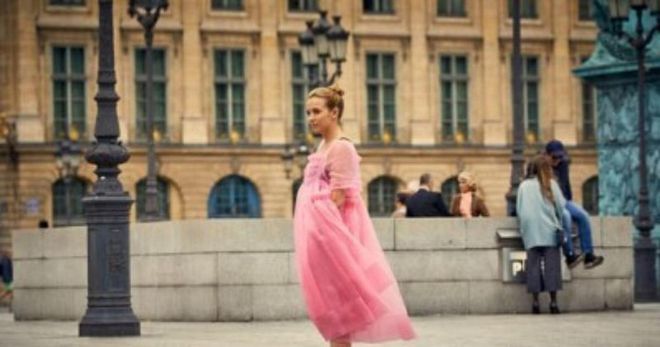
Photo: TPG Images
Killing Eve
Related article: Whitney Peak Opens Up About ‘Gossip Girl’ 2.0 And What Drives Her As An Actor
Not all shows that place fashion front and centre skew young. BBC’s Killing Eve has been a style smash since its debut in 2018. The series recently wrapped up its fourth and final season, and in that period, the crime thriller and psychodrama about the push-and-pull between a sociopathic assassin and the agent on her tail has served up a plethora of looks to die for. The only thing that delights Villanelle, the assassin in question, more than her job is perhaps her wardrobe—which is as kaleidoscopic and eclectic as the characters she assumes to carry out her killings. Her outfits can range from a gothic- prairie floor-length floral dress from The Vampire’s Wife to a snazzy geometric-print suit from Halpern. High-fashion pieces from LOEWE, Dries Van Noten and Gucci regularly show up on the series, but the most memorable Villanelle look is perhaps the cloud of pink Molly Goddard tulle she wore with Nicolas Ghesquière-era Balenciaga biker boots.
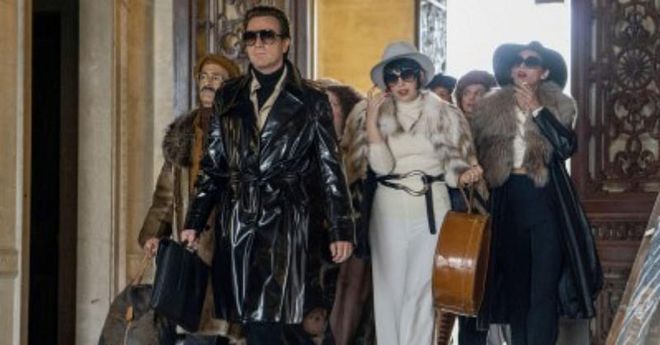
Krysta Rodriguez and Rebecca Dayan in Halston. Photo: TPG Images
Halston
Then, there are the shows about fashion. Ryan Murphy’s Halston was a seductive immersion into the legendary designer’s life and career, tracking his rise and fall, the sensuous minimalism of his designs that changed and then defined the fashion of the ’70s, the decadence of that era, and his glittering, impossibly glamorous social circle (Liza Minnelli! Paloma Picasso!). Murphy’s shows can sometimes be a celebration of style over substance, but here, they went perfectly hand-in-hand. His other fashion-centric limited series, American Crime Story: The Assassination of Gianni Versace, was another spectacular blend of beautiful people in beautiful clothes with sensational drama.
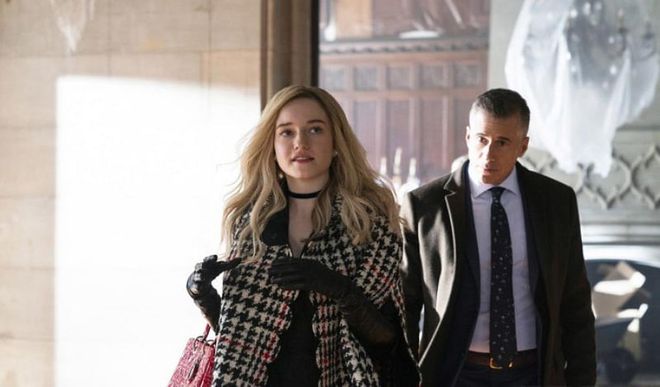
Julia Garner in Inventing Anna. Photo: TPG Images
Inventing Anna
Related article: Julia Garner Talks Her Approach To Her Craft And Her Lifelong Love Affair With Fashion
Shonda Rhimes’ Inventing Anna, based on the true story of Anna Delvey, the faux heiress who scammed New York’s high society, was not about fashion per se, but it is inherent to the tale. Fashion wasn’t just the circles she ran in (Delvey interned at Purple, the fashion and art magazine; and was a fixture at New York’s fashion shows and parties) but was also a major factor in how she managed to scam the city’s elite ranks and cultural cognoscenti. In short, she looked like them—a look that was visibly expensive, but not try-hard (a dead giveaway when spotting a climber): Think classic Dior and Chanel bags, Old Celine glasses, and other stealth wealth accoutrements. Blockbuster ratings for these shows prove that audiences want to be seduced not just by a gripping tale, but one also steeped in style. After all, fashion at its very best is about storytelling. So while other mediums come and go (or not), for now, it looks like fashion and television are making very happy bedfellows.